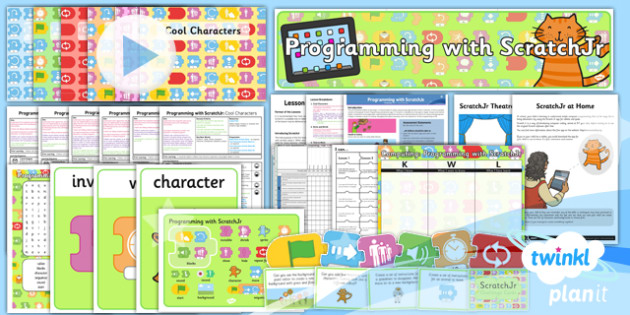Handy Ideas On Deciding On Italian Nursery Teaching Aids
Wiki Article
What Kinds Of Educational And Informative Material Is Needed For Kindergarten And Primary School?
Many primary or kindergartens require a range of educational, informational and other materials that aid their students in learning and developing. The materials needed are Curriculum materials. These materials are designed to support the school's learning objectives. Examples of the materials that could be needed include: Curriculum materials- These materials are designed to support the learning goals of the curriculum at school.
Classroom supplies- Classroom supplies such as pencils, paper as well as scissors, glue and other art supplies are essential for young children to complete their tasks and assignments.
Technology for education. In this age of digitalization, technological advances in education, such as computers tablets and interactive whiteboards are available to provide resources for students and improve their education.
Booksfor Kindergarten and Primary schools require a variety of books that are appropriate for children's age to promote reading and develop language.
Manipulatives- Manipulatives like puzzles, blocks, and games help children to develop their problem-solving skills and spatial awareness.
Visual aids. Visual aids like posters or charts can aid children in understanding and retain important concepts.
Materials for art and music- Materials such as clay, paints instruments, and music give children with an outlet for creativity and also encourage self-expression.
Safety Resources- To ensure the safety of students as well as employees, it is vital to have materials such as emergency procedures posters as well as first aid kits as well as fire extinguishers.
All in all, kindergarten and primary schools need a variety of information and educational resources to create an engaging and secure learning environment for their students. View the top sostegno infanzia for more tips.

What Is The Most Effective Maths Support Material To Teach With For Italian Kindergartens?
In Italian nurseries, mathematics teaching materials can aid in developing children's numerical, spatial and problem solving skills. Here are a few examples of where math material support might be needed: Training for caregivers and teachers: Both caregivers and teachers might require instruction on how to incorporate math concepts into everyday activities, and the best way to utilize mathematics materials.
Lesson plans and curriculums: A well-designed curriculum and lesson plans that incorporate mathematical concepts can aid in ensuring that kids are exposed the various math concepts and techniques.
Children can learn math visually with manipulatives like beads, counting bears, and blocks. Posters and charts are also effective visual aids.
Technology-based learning aids for children. Technology aids like tablets that include math educational apps or games can be a great way to engage children in the classroom and provide them with extra sources.
Assessment Tools Teachers and parents can utilize assessment tools to keep track of children's progress and identify areas in which additional support is needed.
Parents are involved: Engaging parents in the classroom can reinforce concepts that are taught in the nursery, and also encourage family involvement in learning.
Mathematics teaching materials should be suitable for children as young as. Teachers and caregivers can use these materials to design exciting and engaging math activities which encourage children's curiosity and passion for learning. See the top materiale didattico matematica sostegno for blog tips.

What Materials And Resources Are Needed In Italian Kindergartens To Teach Science?
The use of science teaching material in Italian nurseries is a great method to inspire young children to explore and discover what's around them. Here are some examples where the use of science materials is required: Curriculum and lesson plan: A well-designed lesson program and curriculum that integrates scientific concepts can make sure that children are exposed and learn a variety of scientific concepts.
Visual aids and manipulatives Charts, posters, natural specimens and magnifying glass kits are all a great way to help children understand scientific concepts using the use of tactile and visual aids.
Books and videos. Videos or books on topics such as weather as well as space, animals and plants can engage children as well as provide extra resources.
Outdoor learning spaces Playgrounds and gardens provide children with the opportunity to discover and explore the natural world.
Parents' involvement: Involving parents in science learning can reinforce the ideas learned in the nursery and increase participation of the family in learning.
Assessment Tools: Assessment tools are helpful for caregivers and teachers to track children's development and pinpoint areas in which more support is required.
It is important to ensure that the materials used in science education that is provided is suitable for the age of the children. The materials can be utilized by teachers and caregivers to develop engaging and interactive science activities which will encourage children's curiosity. View the best materiale didattico scienze sostegno for website advice.

What Teaching Resources For Geography Do Italian Nurseries Need?
In Italian nurseries, geography teaching materials are used to teach children about the world and other cultures. Here are a few examples of geography-related teaching materials that are recommended Maps: Maps help children understand the geography of different nations and regions, and the exact location of landmarks and natural landmarks.
Globes. Globes will assist your child to see the Earth's surface. They can also help them learn more about the continents.
Videos and pictures. Pictures and videos of different cultures, places and people can help teach children a lot about the world.
Books that are age-appropriate, appropriate for children featuring different cultures and locations can help children gain an understanding of geography and a sense curiosity about the globe.
Natural materials. Shells, rocks and plants aid children in understanding different eco-systems and the environment.
Field excursions. Children can gain knowledge about the world through hands-on learning and visits to local parks, zoos and museums.
It is crucial to select materials for geography education that are both age-appropriate as well as culturally sensitive. Teachers and caregivers are able to utilize these resources to develop exciting, interactive geography lessons that stimulate children's curiosity and curiosity.
